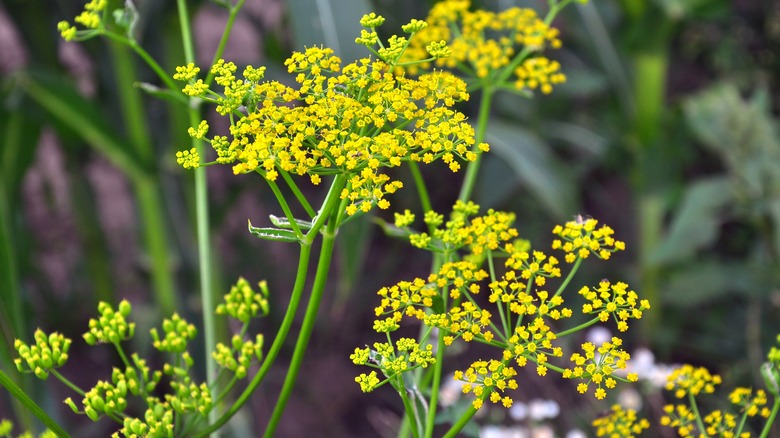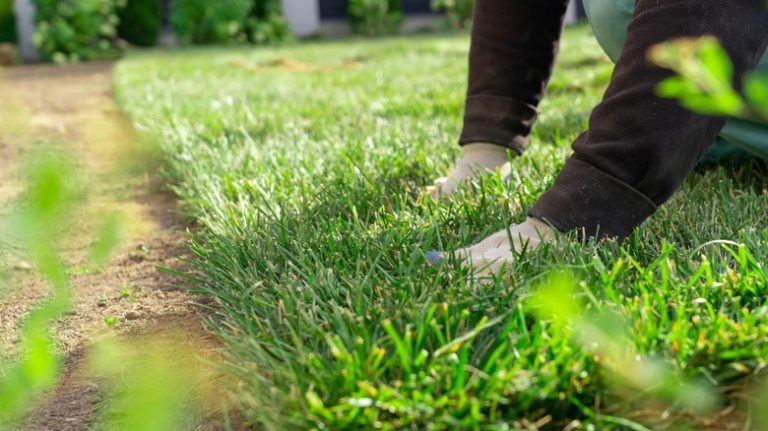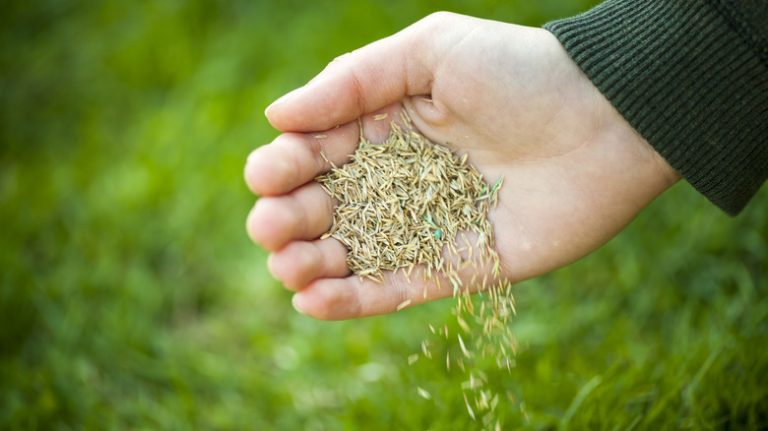What has umbrella-shaped yellow flower clusters atop stalks that look like celery plants? The answer is wild parsnip, also known as poison parsnip (Pastinaca sativa), which is a highly invasive plant that is extremely toxic to the touch. You will definitely want to stay far away from this plant, since it is an aggressive perennial that can spread quickly and cause harm to not only humans but also plants and animals.
This plant can grow up to 6 feet tall and can be found along roadways and trails or in pastures, fields, and any untamed areas. It won’t grow in the shade, and its seeds remain viable in the soil for multiple years. It can spread rapidly and overtake native plant and animal habitats. This species flowers once after the second year and dies after going to seed. it escaped cultivation after being brought here by European settlers as a root vegetable. Decreasing its population takes years of commitment, as invasive species like this one can be severely detrimental and are persistent on spreading. If you encounter wild parsnip on your property, here’s the information you’ll want to have.
Wild parsnip’s toxicity
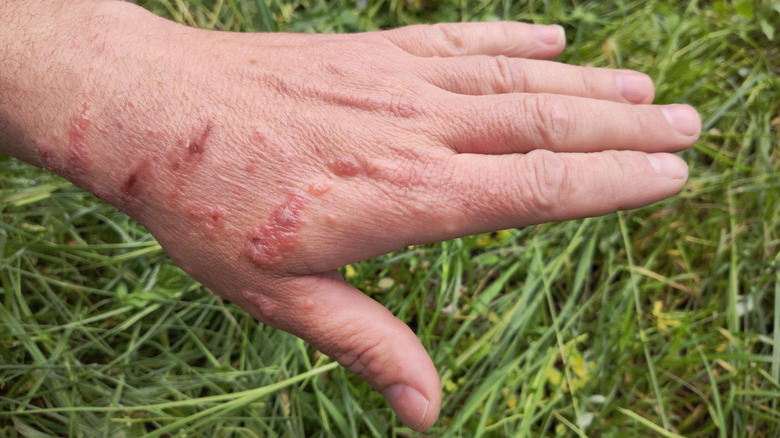
With this plant, all it takes is making contact to experience adverse effects, as the poison is in the sap. It contains something called furanocoumarins, which are chemicals that react to UV light to cause phytophotodermatitis on human skin. This means a severe burn, blisters, potential discoloration of the skin, and sensitivity to sunlight that can last for years just from brushing against the plant or breaking it. These symptoms typically come on within 2 days after contact. This plant is also a danger to livestock if they eat it.
Because of this, it’s important to identify this plant on your property and either steer clear or dispose of it correctly. If you see a wide-spreading plant with thin celery stalks, saw-toothed leaves, and small yellow flowers in the summer, this is wild parsnip. When trying to eradicate this plant, always wear gloves, protective clothing, and eyewear. Work in the evening or very early morning when it’s cooler and the sun isn’t fully out. Sunlight, heat, and sweat will exacerbate the rash if accidental contact is made, so this is an important precaution. Afterwards, use Dawn dish soap or a grease-cutting detergent to wash your hands and anything that made contact with the wild parsnip, including tools. Wash your clothes in their own load as well. Put all debris into black plastic bags and leave in the sun for at least a week before disposal. Make sure you don’t burn or compost it.
How to get rid of wild parsnip
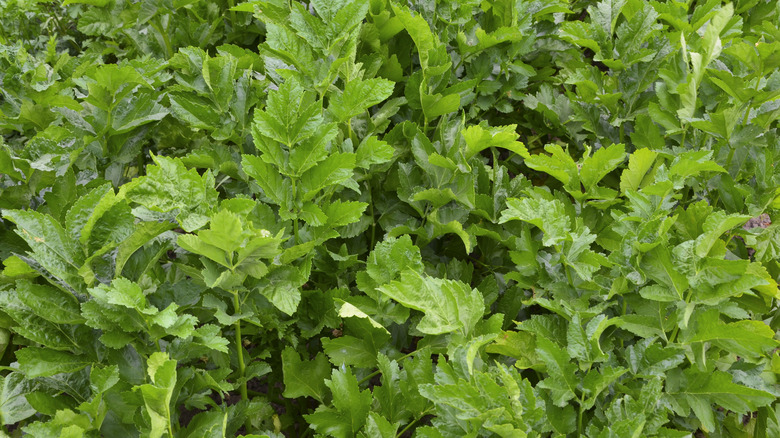
The first and easiest way to remove this invasive species from your yard or garden is by using a dandelion fork or a sharp spade. You can do this with younger plants in particular such as seedlings, rosettes, or new shoots before the plants have flowered and set seeds. Wild parsnip grows its taproot just an inch or two beneath the soil, so you can sever that root with the blade of a sharp spade to kill them.
If you have a larger patch to deal with, you can mow it down before it flowers, which occurs in the summertime. However, keep in mind you will need to continue to regularly mow throughout the season and for many years after. You will also need to thoroughly wash the lawnmower after each use to prevent accidental reseeding. If you don’t mind using chemicals, you can use an herbicide for broadleaf plants in the spring or the fall instead. Unfortunately, you’ll run into the same issue with having to keep treating the area many times over the next several years in order to completely eliminate wild parsnip.

